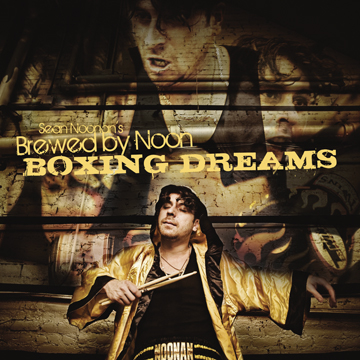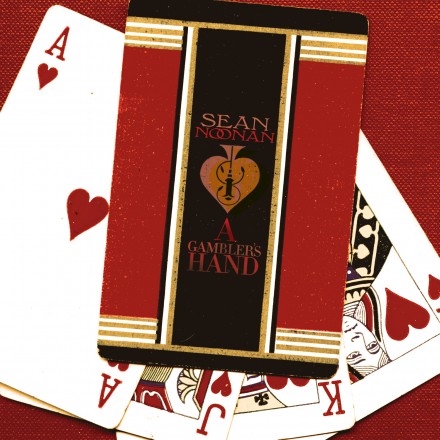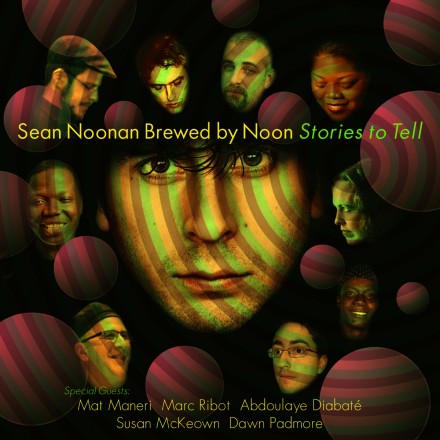Sean Noonan's Brewed by Noon
Boxing Dreams
SGL 1573-2Since the release of his previous Songlines record Stories to Tell in early 2007, Sean Noonan has been busy stirring up the ingredients of his unique “wandering folk music” project, and here’s the new brew. Grandiose, intoxicating, and sui generis, Boxing Dreams is a wildly ambitious and idiosyncratic concept album that blends passionate vocals and time-honored lyrics from Ireland, Mali and Senegal, raw power-jamming jazz/rock guitars, shape-shifting improv viola, dense soundscapes, funked or punked up drum and bass grooves and complex, dancing polyrhythms. The musical stories Noonan tells are as diverse as ever, but the overriding metaphor of the record’s title suggests how he wrestled its elements and his own restless subconscious into a personal artistic vision.
“The main effect I wanted in Boxing Dreams was to give the impression that the entire album is a single boxed dream, where each song captures a different dreamed or imagined story. ‘Morpheus’ in some ways sets the dreamy mood of the album. Morpheus is the god of dreams, who assumes any shape and form, and on this song Susan McKeown sings from an Irish Gaelic aisling or dream poem called ‘Magic Mist.’ ‘Courage’ is a tribute to my hometown (Brockton, Massachusetts) boxing legend Rocky Marciano, who remains the only heavyweight champion in boxing history to retire having won every fight in his professional career. Lately I’ve been intrigued by the physical intensity and body movements of boxing. I’m beginning to visualize these movements and apply boxing concepts in my drumming. ‘The Return of the Peanut Butter Queen’ was first an actual dream I had about a queen named Ilylea who taught her fellow peanuts the magic of making peanut butter, creating great prosperity and hope in the land of peanut. Later I wandered this story into a composition. ‘Story of Jones’ is a country-style instrumental narrative – each of the three sections re-enacts what happened on the famous train engineer’s journey to the promised land in 1900. Jones lost his life saving his passengers when he collided with Old No. 9 in Tennessee and was found dead still gripping the train’s brakes.”
Along with the dream concept there’s a lot more singing on Boxing Dreams than on Stories to Tell, and generally the songs are multi-lingual (Gaelic, Wolof, Bambara, English). Says Sean: “I think of my songs as old wine in new bottles, where my mission is to truly further understand and preserve folklore and present it in a modern context. A major aspect of Boxing Dreams is how the music adapts storytelling, folklore and post-modern jazz, merging material from the Bardic and Griot traditions.” The singers were given freedom to interpret the compositions: “I would first have them listen to the music and then told them what the basic theme was and have them sing about what they visualized. Both Susan and Abdoulaye surprised me in how they complemented the instrumental arrangements, and Susan discovered and presented some amazing Irish literature.” An example of the unique synergy between voices and instruments: Susan’s sound is entranced and bewitching, and Mat Maneri is like her instrumental shadow or familiar. As Aram Bajakian, Sean’s closest musical collaborator here, comments: “There’s something really eerie about the way Susan’s voice goes with Mat’s playing. And then Abdoulaye will come in, and it brings a smile to your face. He has such an amazing presence.” And this is just one example of the surprising juxtapositions Noonan pulls off throughout the record. With Marc Ribot and Jamaaladeen Tacuma adding their own brilliant improvising to the brew, Boxing Dreams takes Sean’s Afro-Celtic-American project to a new level.


